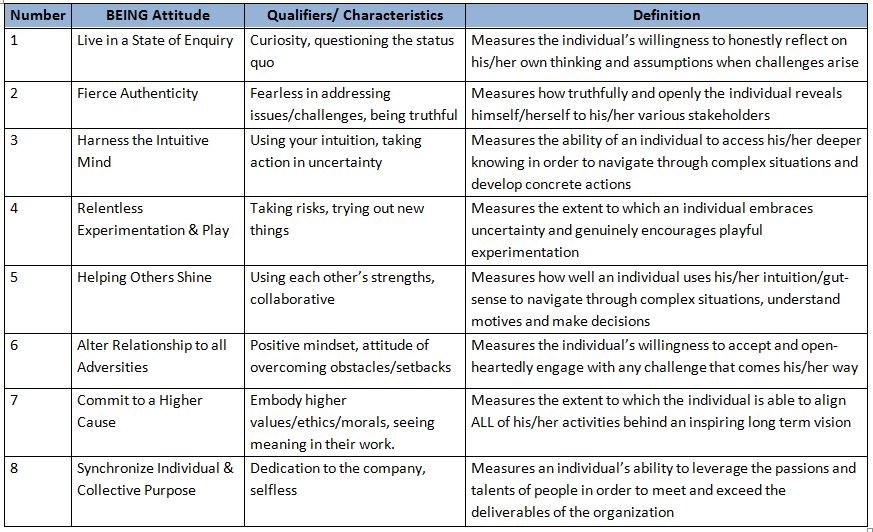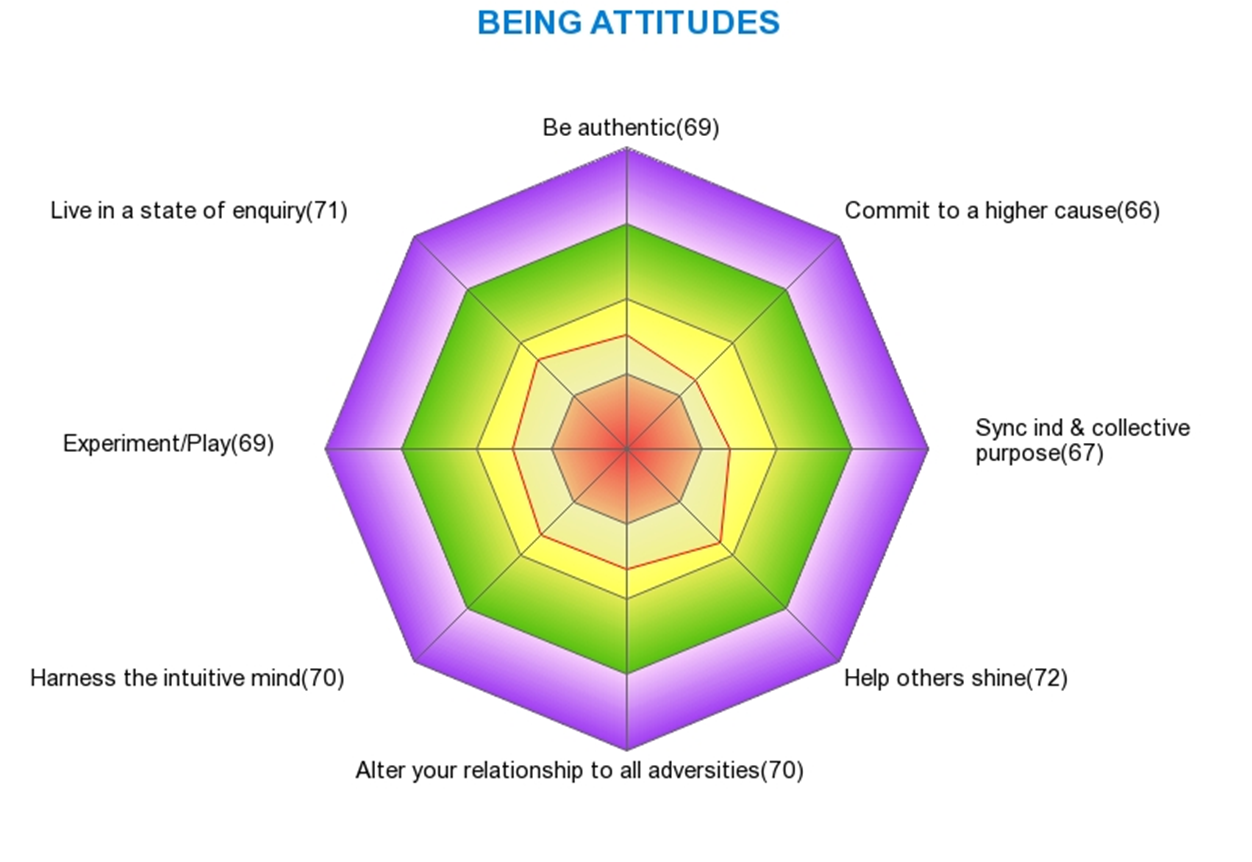This article is a must read for all employers looking for the next breakthrough in organizational performance. It lays out the challenges we face in today’s organizational world and provides scientific proof that Human Potential Realization is the key to create happier workplaces that in turn will unleash the next wave of value creation in organizations.
1. BACKGROUND
According to a recent Gallup study only 13% of employees are engaged at work, costing US companies roughly $450-550 Billion annually. It seems that focusing on employee happiness is the key to reversing this trend. Research at the University of Warwick found that the experience of happiness led to a 12% spike in productivity, while unhappy workers proved 10% less productive. Similarly, the extensive “Science of Happiness at Work” research done by iOpener Institute in the UK found that the happiest employees:
- Take one tenth the sick-leave of their least happy colleagues
- Are six times more energized
- Intend to stay twice as long in their organizations
- Are twice as productive
This is common sense: human happiness has a large and positive causal effect on productivity. This much is known and having data to prove it is helpful to draw the attention of Organizational Development (OD) & HR professionals. What is less clear however is how to SUSTAINABLY create organizational cultures where employees FEEL happy. In other words what are the deeper drivers of happiness?
2. WHAT IS HAPPINESS?
The answer to this question DOES NOT lie in better benefits, higher pay, promotions etc….These extrinsic factors might provide a brief boost in the sensation of happiness but it will not be sustainable. Before long we will take the new level of pay or increased responsibility for granted and yearn for the next wave of external recognition.
Our deep held belief at BEING at Full Potential is that true, sustainable happiness originates from a deeper place within, a place of inner fulfillment. We have found that when we ignite the Human Spirit, and find opportunities to utilize our unique gifts and talents in service of a meaningful cause, our lives automatically get filled with joy, happiness and bliss. In other words, true happiness is simply an inner choice for a more abundant & aligned approach to life. This is great news because inner happiness is fully within our own control! A 2012 Harvard Business Review article refers to this as “Positive Intelligence”. They have found that there is a 12% increase in productivity when the mindset of gratitude and acknowledgment are practiced on a daily basis.
3. A HOLISTIC FRAMEWORK TO MEASURE AND PREDICT EMPLOYEE HAPPINESS
We, at Being at Full Potential, recognize that this whole inner dimension of mindset and attitude can be difficult to grasp and act on, especially in the organizational context. Without a holistic framework that breaks down the INNER BEING into concrete dimensions that we can measure and implement in systematic ways, very little action will be taken to sustainably boost employee happiness in the workplace.
“What gets measured, gets done”
Addressing this need has been our source of inspiration and creativity over the past 10 years and has resulted in the development of the following “House” framework (see figure 1 below). In this model we look at the deeper drivers of Human BEINGNESS and measure the extent to which they are being expressed at a given point in time.
Not only can we measure the deeper drivers of Human Potential Realization, we can now also SCIENTIFICALLY PROVE that it correlates with HAPPINESS. Our recent research with Fontys University in the Netherlands has found that the more we step into our Human Potential by expressing each one of these 23 Dimensions, the happier and more fulfilled we will BE.
4. CORRELATING HUMAN POTENTIAL REALIZATION TO HAPPINESS
Our research with Fontys started with the following question: ‘What is the relationship between expressing our Human Potential, measured with the Human Potential Assessment (HPA), and HAPPINESS, measured with the Oxford Happiness Questionnaire (OHQ)?
In the period between September 2016 and March 2017 a sample of 100 people (including students and graduates who have recently joined the workforce) completed the Human Potential Assessment. In addition to the standard 83 questions for the HPA, this assessment also included the 8 questions used to measure the Oxford Happiness Index.
The researchers at Fontys University have successfully concluded that there is a high correlation (rs = .45, p <.01, two-tailed, N = 101) between the total scores of the HPA and the OHQ, with the strongest positive correlation (rs = .61, p <.05, two-tailed, N = 15) being in the age category of 36 to 48 years. Furthermore, the two dimensions of the Human Potential model: ‘Individual Awareness’ and ‘Living my calling’ have the highest correlation with the total score of the OHQ, namely rs = .54 and rs = .53 respectively.
5. WHAT DOES THIS MEAN FOR ORGANIZATIONAL DEVELOPMENT PROFESSIONALS?
For the first time we can now measure the deeper drivers of happiness and feel confident that addressing them will result in performance breakthroughs! Specifically, this research suggests we should be looking at initiatives that raise the awareness of an individual’s gifts & talents (individual awareness) and finding opportunities for them to bring more of who they are into their day to day work (Living my calling), both of which are proven to have the greatest impact on Happiness.
This same research with Fontys makes it abundantly clear that there is a lot of work for us to do in raising the Human Potential utilization of the younger generation joining the workforce (see House diagram – Figure 2). This is no surprise given today’s low employee engagement scores. However, now we know where to focus our attention and how to turn this unsustainable situation with into a huge opportunity!

6. HAPPINESS CENTRIC ORGANIZATIONAL CULTURES
To make this work even more tangible and practical for organizational leaders we have dug further beneath the iceberg to identify the most important mindsets, or attitudes, contributing to Human Potential Realization and ultimately EMPLOYEE HAPPINESS. These 8 “Being Attitudes” can be measured and deliberately cultivated as part of an organization’s culture.

Again, looking at the results from the Fontys study we see that the younger generation entering the workforce are significantly under expressed on these 8 Being Attitudes. This does not mean that they are deficient in these areas. Rather it suggests that, given the current working conditions in many organizations, employees are discouraged to express themselves in these important areas.

This is of course a watch out. Since the current working conditions often prioritize employee productivity over employee happiness, many talented and highly skilled people are unable to express their Human Potential and as a result remain deeply unfulfilled in the work place. However, this also presents a huge opportunity. The organizations who are able to evolve their cultures around these 8 Being Attitudes will automatically create the conditions for employees to express their potential and deliver breakthroughs in performance. The ICEBERG diagram below illustrates the relationship between the 8 Being Attitudes at the bottom, Human Potential Realization (ie: the 4 Being States in the center) and the critical organizational performance metrics at the top.
7. WHERE DO WE GO FROM HERE?
As we progress on these deeper dimensions and start creating organizational cultures where the focus is on unleashing more Human Potential, we will see significant improvements in employee happiness, retention, engagement and ultimately productivity. The business case for Human Potential Realization is enormous. As we have seen in the beginning of this article, reversing the negative employee engagement trend is a $450 – 550 billion opportunity in the US alone!
Here are some concrete next steps / questions for your consideration:
- Consider the breakthroughs in value that can be created when your people express 10 or 20% more of their Human Potential vs investments in process and systems optimization
- Use the Human Potential Assessment and Methodology to build a sustainable roadmap for employee happiness
- Assess how well your organization’s culture cultivates the 8 Being Attitudes
- Use the Human Potential Assessment and measures when recruiting new talent. This will quickly deepen the conversation and determine if the candidate not only has the rights skills but even more importantly the right mindsets to thrive in the organization.



